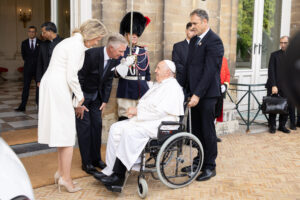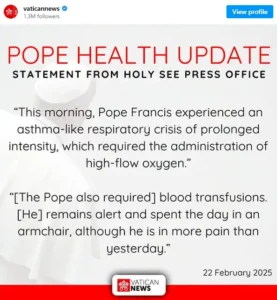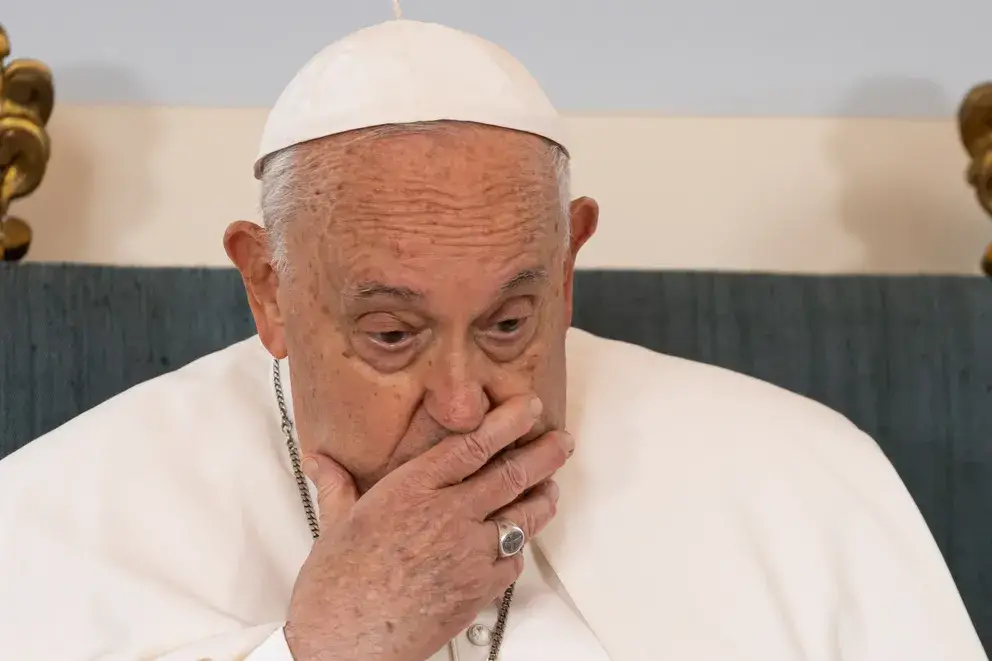Pope Francis’ Social Media Appeal
In his first message of the day, Pope Francis urged his followers to continue their ministry of love with joy, emphasizing the transformative power of kindness. Referencing the Gospel reading for that day, he exhorted:
“I urge you to continue your apostolate with joy and to be a sign of a love that embraces everyone. May we transform evil into goodness and build a fraternal world. Do not be afraid to take risks for love!”
This message was both a spiritual reminder and a call to action, encouraging believers to let love and compassion guide their lives even in the face of adversity.
In his second message, the Pope expressed deep gratitude for the global outpouring of support, particularly noting how much he was touched by the gestures of young believers. “Thank you for your closeness, and for the consoling prayers I have received from all over the world!” he wrote. These words served to reinforce the sense of community and shared faith among his followers during a time of personal health struggles.

Health Update from the Vatican
The Holy See Press Office, in a statement shared on Instagram on the same day, provided further details on Pope Francis’ condition. The statement confirmed that the pontiff remains in critical condition, although his health had shown some stabilization since February 22. Notably, he has not experienced any further respiratory episodes since Saturday evening.

Recent medical updates revealed that Pope Francis received two units of concentrated red blood cells, which effectively raised his hemoglobin levels. While his thrombocytopenia remains stable, early signs of mild renal insufficiency have been noted in his latest blood tests. These developments are being closely managed by his medical team.
Despite these challenges, Pope Francis continues to receive high-flow oxygen therapy via nasal cannulas. According to reports, he is “alert and well-oriented,” though Vatican officials caution that the prognosis remains guarded. Given the complexity of his condition, his full recovery will depend on the time required for ongoing treatments to take effect.
In a rare display of resilience, the pontiff participated in Holy Mass on Sunday morning from his apartment on the tenth floor. Accompanied by his dedicated caregivers, he celebrated the Eucharist, a gesture that underscored his enduring commitment to his spiritual duties despite his physical limitations.
Reactions from the Catholic Hierarchy
Amid the unfolding health crisis, Cardinal Timothy Dolan delivered an impassioned homily on Sunday, urging all present to keep the Pope in their prayers. During his address, the cardinal remarked on the profound responsibility felt by those who consider Pope Francis a father figure. “We of the Catholic family, and so many of our friends and neighbors, find ourselves this morning at the bedside of a dying father,” Cardinal Dolan declared. His words reflected the deep emotional impact the Pope’s condition has had on the Catholic community worldwide.
While Cardinal Dolan acknowledged the grave situation, he also pointed out that no one at the Vatican had publicly confessed that the Pope might not recover. This comment underscored the complexity of the situation—balancing the need for honest reflection on the Pope’s health with the desire to maintain hope and solidarity among the faithful.
The Ongoing Health Struggle
Pope Francis’ current health challenges are not new. In recent months, the Vatican has reported that the Pope has been suffering from bronchitis, which significantly hampered his ability to deliver public addresses. At times, he has delegated his prepared remarks to be read by others during various events, including his Wednesday General Audiences.
Earlier updates from Vatican News indicated that due to his condition, the Pope had opted to conduct his audiences from his residence at Casa Santa Marta. After his audiences on February 14, he was admitted to Rome’s Agostino Gemelli Polyclinic hospital, where doctors conducted extensive diagnostic tests focused on managing his bronchitis and preventing further complications.
By February 18, Pope Francis was diagnosed with bilateral pneumonia, a development that added another layer of concern. The Holy See Press Office stated that the Pope was undergoing complex treatment—including corticosteroids and antibiotics—to combat a polymicrobial infection. Despite the seriousness of his condition, reports noted that the Pope remained in “good spirits,” alternating between periods of rest, prayer, and reading. He also continued to receive the Eucharist, reinforcing his unwavering spiritual commitment even as his physical health deteriorated.
On February 22, further updates revealed that Pope Francis had suffered an asthma-like respiratory crisis, necessitating high-flow oxygen therapy. Blood tests conducted around the same time indicated that he was experiencing thrombocytopenia and anemia, which led to the administration of concentrated red blood cells. Although these interventions have helped stabilize his condition, his health remains fragile, and he continues to face significant challenges.
The Medical Perspective
During a recent press conference, Dr. Sergio Alfieri—the head of the Pope’s medical team—and Dr. Luigi Carbone, the Vice-Director of Vatican healthcare services, addressed questions from journalists for approximately forty minutes. They clarified that although Pope Francis is not on a ventilator, his breathing remains compromised, necessitating restrictions on his physical activities. The doctors also emphasized that the risk of bacterial infections progressing to sepsis is a primary concern, requiring constant vigilance and meticulous management.
While Dr. Alfieri expressed optimism that the Pope would eventually be discharged and return to his residence at Casa Santa Marta, he was cautious in noting that the chronic respiratory issues may persist even after the hospital stay. These insights provided a sober reminder of the ongoing battle the Pope faces—a battle that is as much about managing long-term health complications as it is about addressing acute episodes.
Reflections on Pope Francis’ Resilience
Throughout these challenges, Pope Francis has continued to engage with his followers and to provide comfort through his words and actions. His ability to share personal messages on social media, even as he battles critical health issues, is a testament to his enduring commitment to his spiritual mission. The messages he shared on February 23, calling for courage, love, and a transformation of evil into goodness, resonate deeply with a global audience that looks to him for guidance and hope.
The support for Pope Francis extends far beyond the walls of the Vatican. His personal messages, combined with the detailed health updates provided by the Holy See Press Office, have sparked a wave of prayers, well wishes, and expressions of solidarity from believers around the world. The widespread concern for his well-being highlights not only the Pope’s influence as a spiritual leader but also the deep emotional connection that many feel with him.
The Broader Implications for the Catholic Community
Pope Francis’ current health crisis has prompted widespread reflection within the Catholic Church and among its followers. The updates regarding his condition, the complexities of his treatment, and the visible efforts of his medical team have all contributed to a renewed sense of urgency in the spiritual community. Many see this period as a time to reexamine what it means to live a life of faith in the face of adversity.
Cardinal Dolan’s poignant remarks during his homily, which depicted the Pope as a dying father figure, have underscored the deep personal impact that Pope Francis has on his followers. His words serve as both a call to prayer and a reminder of the fragile nature of human life—a theme that resonates across cultures and faiths.
Moreover, the public nature of these updates has fostered an environment of transparency that is increasingly rare in matters of high-level leadership. By sharing detailed information about the Pope’s condition and treatment, the Vatican has provided its followers with a clear, unvarnished picture of the challenges that lie ahead. This transparency, while undoubtedly concerning, also reinforces the strength and determination that the Catholic community has come to associate with Pope Francis.
Conclusion
As Pope Francis continues to battle his health challenges, his messages of hope and gratitude serve as a beacon for millions around the world. The detailed updates provided by the Vatican and the personal appeals he has made on social media highlight not only the severity of his condition but also the unwavering spirit with which he faces adversity. While his prognosis remains guarded, the combined efforts of his medical team, the support of the Catholic community, and his own resilient determination offer a glimmer of hope for his eventual recovery.
In these trying times, the life and words of Pope Francis remind us of the power of love, the importance of compassion, and the enduring impact of faith. His call to transform evil into goodness, to embrace love with courage, and to support one another in times of need is a message that transcends individual struggles and speaks to the collective human experience.
As we continue to follow his progress, let us keep the Pope in our thoughts and prayers, drawing inspiration from his unwavering commitment to his mission and his relentless pursuit of goodness in the world.
